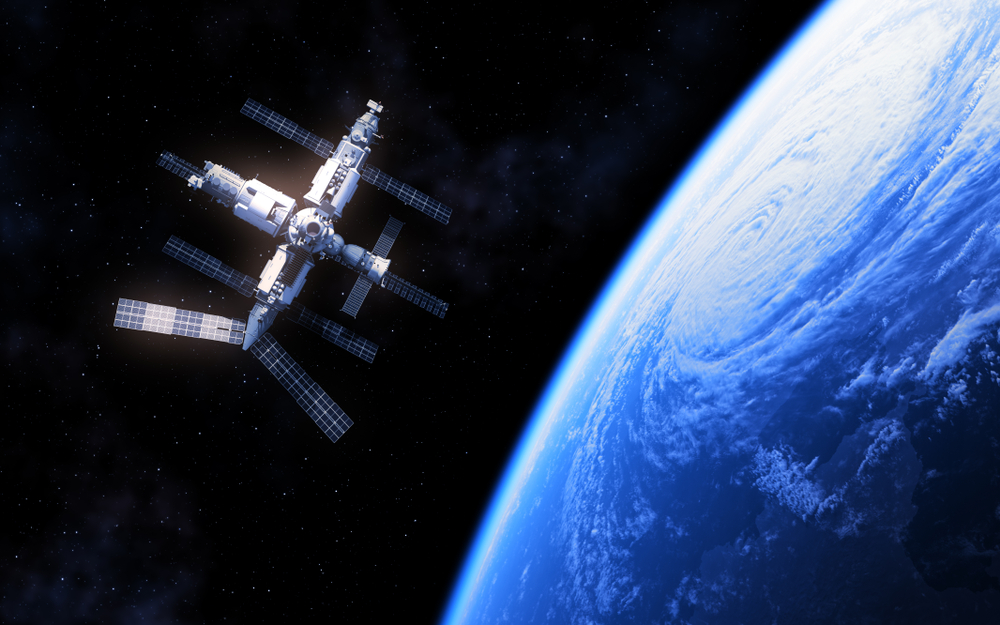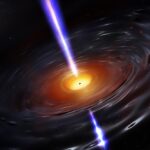Scientists Discover New ‘Super-Earth’ Six Times Bigger Than Ours That Could Inhabit Alien Life

A planet six times the size of Earth orbits a distant star, its skies painted by an alien sun. On its surface—if there is one—the gravity would be stronger, the air unfamiliar. And somewhere in the vastness of space, the same question echoes: Are we alone?
For centuries, we have searched for answers. Now, scientists may have uncovered a new clue. A massive exoplanet—HD 20794 d—has been identified in the habitable zone of its star, making it one of the most promising candidates yet in the search for alien life.
Could its oceans be teeming with unknown creatures? Could its atmosphere hold the chemical signatures of biology? Or does this discovery bring us one step closer to proving Earth is not the only world where life has taken root?
A New Contender for Life: The Surprising Discovery of HD 20794 d
 Image Source: Shutterstock
Image Source: Shutterstock
The discovery of HD 20794 d wasn’t just another routine entry in the catalog of exoplanets—it was a revelation. Located 20 light-years away in the constellation Fornax, this super-Earth orbits a sun-like star in the habitable zone, where conditions could allow liquid water to exist. Unlike gas giants or barren, frozen worlds, super-Earths are rocky planets larger than Earth but smaller than Neptune—prime candidates in the search for life. With six times Earth’s mass, HD 20794 d likely has enough gravity to retain an atmosphere, a crucial ingredient for habitability.
What makes this find even more remarkable is how it was uncovered. Scientists didn’t detect it with a new high-tech telescope; they found it by reanalyzing old data from Chile’s La Silla Observatory. Dr. Michael Cretignier and his team at Oxford University spotted the planet hidden in the subtle wobble of its parent star—a tiny gravitational tug that had gone unnoticed in past observations. This method, known as radial velocity detection, allowed them to determine the planet’s mass and orbit, revealing a world that had been hiding in plain sight.
But discovery is just the first step. Finding a planet in the Goldilocks zone is one thing—proving it can sustain life is another. The atmosphere, temperature, and surface conditions of HD 20794 d remain unknown. Future missions will be needed to determine if it holds the right ingredients for life. Yet, its location alone makes it a key target in the search for extraterrestrial existence.
Could this planet be the breakthrough that changes our understanding of life in the universe? Or will it remind us just how rare and fragile our own world truly is?
Super-Earths—The Most Likely Home for Alien Life?
Super-Earths have become the crown jewels of exoplanet research—not because they are rare, but because they may be the best places to find life. Unlike gas giants, which lack solid surfaces, or barren planets like Mars, super-Earths strike a rare balance—large enough to retain atmospheres, but rocky enough to support complex chemistry. Some scientists even believe that if life exists elsewhere, it’s more likely to be found on a super-Earth than a planet like ours.
HD 20794 d is an especially compelling case. While its exact atmospheric makeup is still unknown, its size suggests it could hold onto a dense atmosphere, protecting it from harmful space radiation and potentially maintaining a stable climate. If the right mix of greenhouse gases exists, the planet could trap enough heat to sustain liquid water—a key ingredient for life.
By contrast, smaller planets like Mars lost their atmospheres over time, becoming cold and lifeless. Gas giants like Jupiter, on the other hand, are too turbulent and lack solid surfaces. Super-Earths, however, could be the perfect in-between—worlds with deep oceans, active geology, and even tectonic activity, all of which contribute to a dynamic, life-supporting environment.
If these planets are so promising, why haven’t we found alien life yet? The challenge isn’t in detecting them—it’s in studying them. Even with our most advanced telescopes, analyzing the atmospheres of distant worlds is extraordinarily difficult. But that’s exactly what scientists hope to do next. If HD 20794 d holds even a trace of oxygen, methane, or other biosignatures, it could be the closest we’ve ever come to proving that life exists beyond Earth.
Can This Planet Actually Support Life?
 Image source: Pexels
Image source: Pexels
Finding a planet in the habitable zone is one thing—proving it can sustain life is another challenge entirely. The biggest unknown about HD 20794 d is its atmosphere. If it has one, what is it made of? A planet’s atmosphere controls everything from temperature regulation to the possibility of liquid water. Without one, even the most Earth-like planets can become barren wastelands.
If HD 20794 d has a thick atmosphere, it could trap heat and maintain stable conditions, much like Earth. But if it’s too thick—like Venus—it could create a runaway greenhouse effect, turning the planet into a scorching, uninhabitable world. The key lies in its chemical composition. Scientists will be searching for telltale gases like oxygen, methane, and carbon dioxide—potential indicators of biological processes.
Another factor is the planet’s surface. A world covered in vast oceans could be a prime candidate for marine life, while a rocky landscape with active volcanoes might suggest a dynamic interior capable of supporting life’s building blocks. But there’s also the possibility that HD 20794 d is something entirely different—what scientists call a “mini-Neptune.” If it has a thick hydrogen-helium atmosphere with no solid surface, life as we know it would be unlikely.
Even if HD 20794 d turns out to be inhospitable today, that doesn’t mean it always was. Just as Mars once had flowing water before becoming the dry wasteland we see today, this planet’s conditions could have changed over time. Understanding its past may be just as important as analyzing its present.
The uncertainty makes one thing clear—this planet is a high-priority target for further research. Upcoming telescopes, like the James Webb Space Telescope and next-generation observatories, could provide the first real glimpse into its atmospheric makeup. If signs of habitability—or even life—are found, it could redefine our understanding of the universe.
What If We’re Not Alone?
The discovery of HD 20794 d is just the beginning. To determine if it can support life, scientists are now focused on analyzing its atmosphere. Using spectroscopy, they’ll search for biosignatures—chemical markers like oxygen, methane, and water vapor that could indicate biological activity. The James Webb Space Telescope and future observatories, like the Extremely Large Telescope (ELT), may soon provide the first real glimpse into this world’s atmospheric composition.
Yet, distance remains a major hurdle. At 20 light-years away, HD 20794 d is far beyond the reach of spacecraft, meaning we must rely on telescopes to uncover its secrets. Some researchers are also looking for technosignatures—evidence of advanced civilizations—raising the possibility that someone on this distant world could be watching back. Whether we find microbial life or a sign of intelligence, this planet represents a crucial step in answering the question that has haunted humanity for centuries.
And if we do find life, the discovery won’t just change science—it will change us. What does it mean for humanity if Earth is not unique? How will we redefine our place in the universe? Every new discovery brings us closer to an answer. And soon, we may finally know.
Featured Image Source: Shutterstock
Loading...






